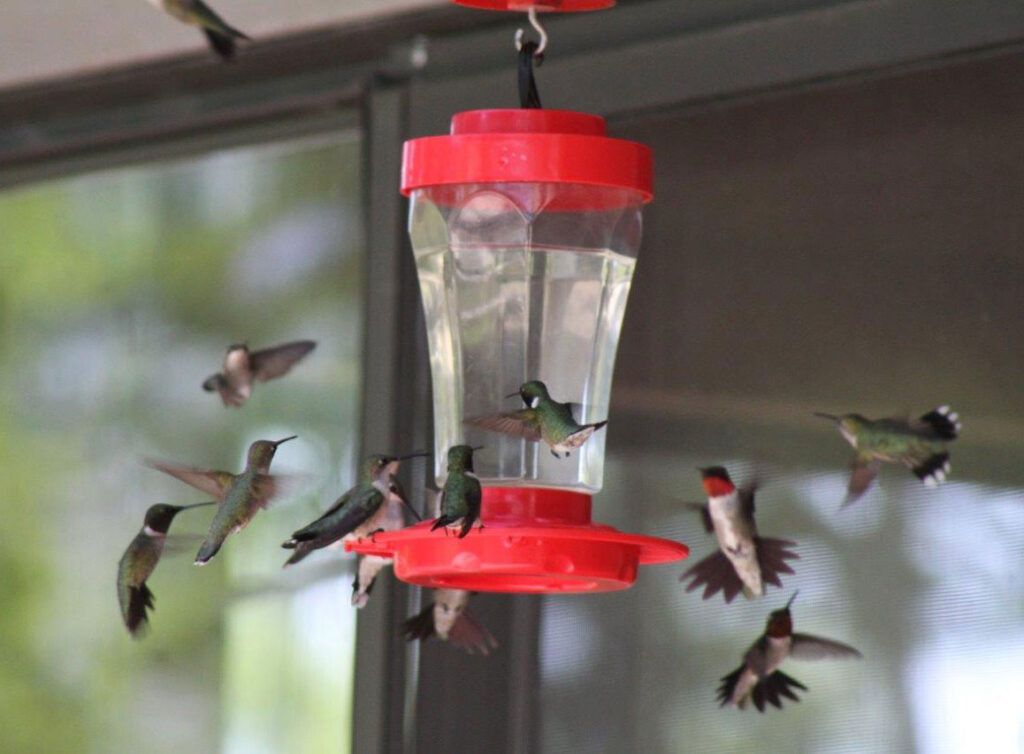Hummingbirds were sighted in Alabama and Louisiana in mid-February. They were spotted in Mississippi just a short while after that, so if you haven’t seen some yet, they’re headed your way! You can see the birds as they are sighted on the map below.
2022 Hummingbird Migration Map

Now is the time to clean your feeders, fill them with sugar water, and hang them up.
In addition to providing a feeder, you can encourage more hummingbirds to stay around your garden by adding plants that provide nectar for the birds, shelter plants, and water.
Include Native Plants for Hummingbirds in Your Garden
Early spring-blooming native plants that the earliest arriving hummingbirds rely on include red buckeye (Aesculus pavia), coral honeysuckle (Lonicera sempervirens), crossvine (Bignonia capreolata), native azaleas, and columbine (Aquilegia canadensis). Any of these would be a great addition to your garden.

Hummingbird Food Recipe
If you want to hang your feeders, here is a simple recipe for making hummingbird nectar.
- Mix 1 cup white sugar with 4 cups of water
- Boil the mixture until the sugar is completely dissolved
- Allow the mixture to cool COMPLETELY
- Fill your feeder
Important tips!
- Do NOT add food coloring
- Do NOT use honey or other sweeteners
You can fill up your feeder with enough sugar water to feed your hummingbirds for 2-3 days and store the remaining amount in the fridge for up to one week. Allow the sugar water to warm up to room temperature before putting your feeders back out.
Regularly clean your feeders with hot tap water, using a good brush to get into the liquid storage area and into the feeder holes. Make sure to remove all algae and dirt before allowing it to dry and refilling it.
